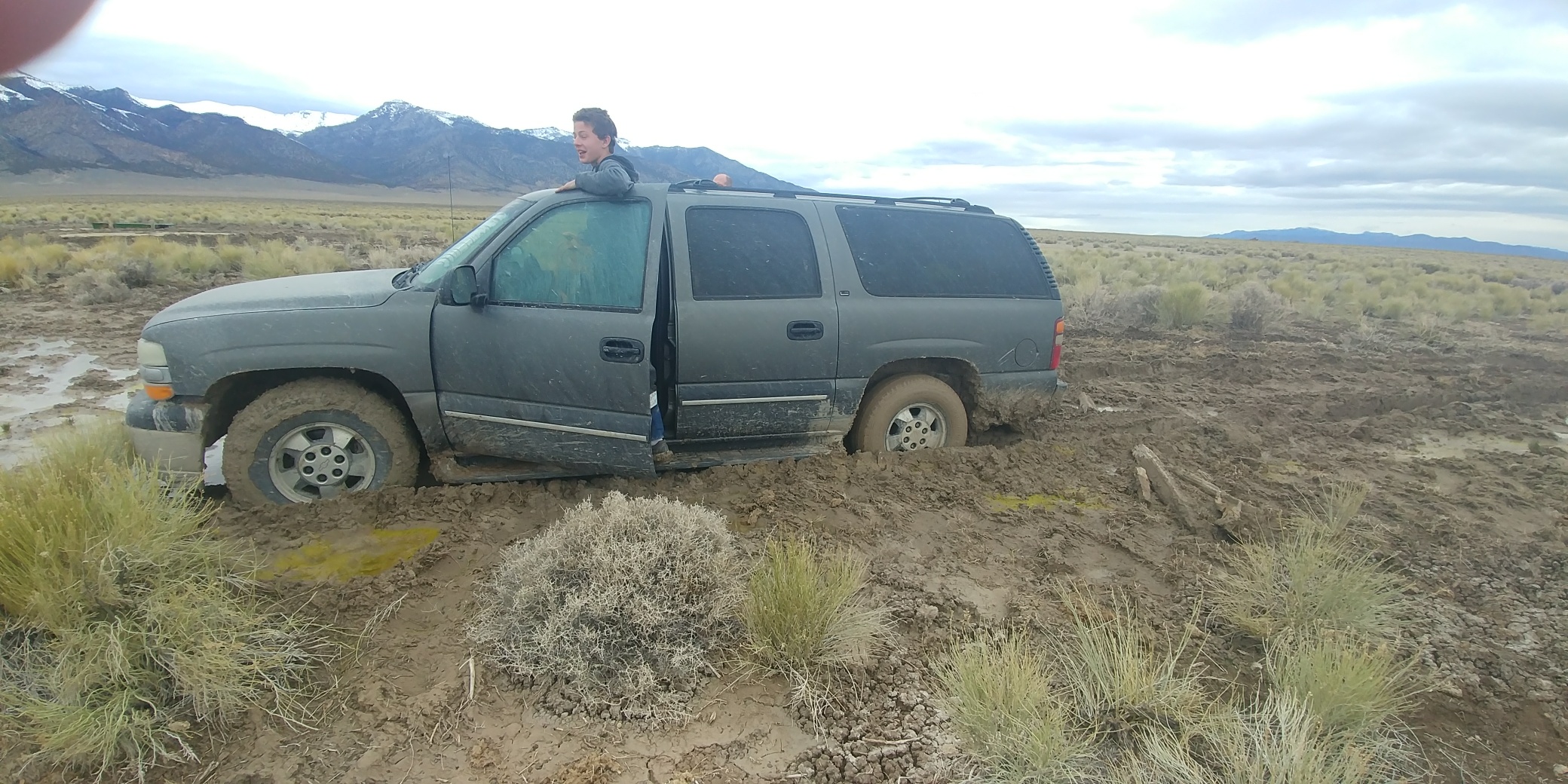Recently my wife and I went with our son’s family on a camping trip in a remote part of Nevada. We were going to explore two caves that he and I had been to before.
On the way to the 2nd cave we took a dirt road that the maps showed to be the most direct route. Our son was leading the way in his suv and we were following behind in ours.
It was a fairly good dirt road, but after a while we started to see standing water in the road. Soon we were going through long stretches of mud. And in a few minutes I saw my son’s suv slanted slightly across the road and not moving.
That didn’t look good. I pulled onto some tire tracks along side or the road so I could stop and walk to where they were stopped. As I walked along the side on the tire tracks, the road got more and more muddy.
When I got to the car, I saw that it was really stuck – up to the axle in the back and almost that deep in the front. And I noticed that less than 100 feet from the car, on the other side of a cattle guard, was a dry, hard, gravel road.
We decided that if I kept my vehicle on the fairly solid tire tracks by the side of the road and used both of our tow ropes, we could probably pull him out of the mud. We got everything ready and then tried to get him unstuck.
As I pulled forward, we made a little progress and then couldn’t move any more. We cleaned out some more from in front of the tires but that didn’t help. I tried rocking my vehicle back a little and then stepped on the gas. All that managed to do was to break one of the ropes hooked between the cars. We reconnected the ropes and tried again with the same results.
We finally came to the conclusion that we could not get the vehicle out of the mud using the tools we were using in the way we were using them. So we decided to get out an old climbing rope and connected it with 4 strands between the suvs.
Climbing ropes are designed for strength and yet are stretchy to absorb shock. We decided to put slack in the rope and then get my vehicle moving to create an impact when the rope tightened. The first time we tried we moved forward a couple of feet. The second time we again jerked forward a little, but kept slowly moving ahead until the vehicle was completely out of the mud. We did not stop until we were safely on the gravel road.
As I have thought about this experience, I have come to recognize how similar it was to getting our lives unstuck when we can’t seem to move forward.
- Sometimes you can’t get unstuck by yourself and you need help.
- You have to be on “dry ground” if you want to help someone else get unstuck.
- You need to be connected with a person to be able to help.
- Sometimes a constant constant ”pressure” can be applied and the the other person can move forward.
- Sometimes, however, they need something to “break them loose” from where are (get them out of their comfort zone).
- The connection between the two people involved needs to be strong enough to support the process used to get unstuck.
- It usually takes time to successfully help someone get unstuck.
- During the middle of these kind of experiences you don’t see much except the pain involved
- Often you can avoid getting stuck by choosing a new route when you realize that there probably is a better way.
It is amazing what you can learn from experience – even a bad one.

